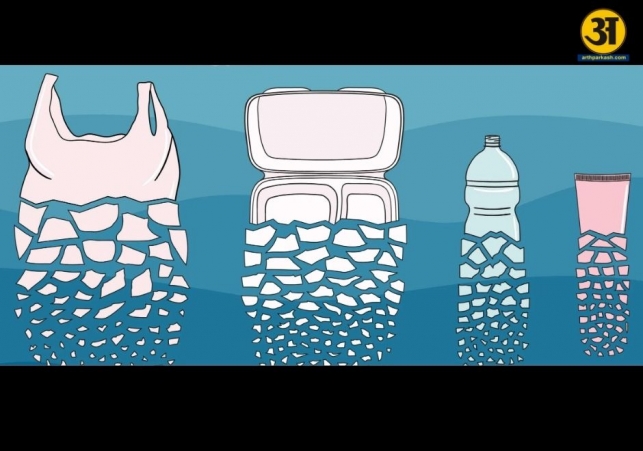
Microplastics leaking from packaging threaten food safety
Microplastics in food packaging pose hidden health risks, studies warn
- By Gurmehar --
- Friday, 04 Jul, 2025
Recent scientific research is uncovering an invisible problem that may be affecting millions of people worldwide: food packaging is silently releasing microplastics and nanoplastics into what we eat and drink every day.
Plastic water bottles, microwave-safe containers, plastic-lined tea bags, and even glass jars with plastic lids are among the many products contributing to this hidden contamination. What’s especially worrying is that this happens even when these items are used correctly — not misused.
How Microplastics get into food
According to a 2023 study published in Environmental Science & Technology by the American Chemical Society, heating plastic containers — even those labeled “microwave safe” — can release tens of thousands of plastic particles into food . The study found that hot food causes the plastic to break down faster, releasing both microplastics (particles smaller than 5 millimeters) and nanoplastics (even tinier particles invisible to the naked eye).
Another research paper published in Nature Food in 2021 showed that plastic tea bags release over 11.6 billion microplastics and 3.1 billion nanoplastics per cup when steeped in hot water. Even routine actions — like twisting open a plastic bottle cap or reusing plastic cutting boards — can introduce tiny plastic bits into our meals.
Moreover, a 2022 report from the University of Newcastle, commissioned by the World Wildlife Fund (WWF), estimated that the average person may ingest around 5 grams of plastic per week — the equivalent of a credit card.
Where the contamination is found
Tests on common food and drink items show widespread microplastic presence. Studies have found particles in:
-
Bottled water: Research by Orb Media and the State University of New York in 2018 detected microplastics in 93% of bottled water samples.
-
Canned fish and beer: Studies suggest microplastics can enter food products during processing and packaging.
-
Table salt and rice: Microplastics have been detected in salt sourced from oceans and in rice stored in plastic bags .
This means both packaging and the supply chain are potential sources of plastic contamination.
Although the long-term health effects of consuming microplastics are not fully known, early studies suggest possible damage to the gut, liver, and reproductive systems. A 2022 study in Environmental Health Perspectives found that microplastics can cause inflammation and oxidative stress in the digestive system and may disrupt metabolism.
ALSO READ: Plant-Powered: Unveiling the Benefits of a Vegan Diet
ALSO READ: Microplastics in food packaging pose hidden health risks, studies warn
Some nanoplastics are small enough to cross the blood–brain barrier and placenta, raising concerns about effects on brain development and fetal health.
While it’s nearly impossible to avoid plastics completely in modern life, experts suggest simple steps to limit your intake:
-
Use glass, ceramic, or stainless steel containers for food storage and reheating.
-
Avoid microwaving food in plastic containers — even if labeled "microwave-safe".
-
Cut back on packaged and processed foods, which are more likely to contain plastic residues.
-
Wash fresh fruits and vegetables thoroughly, as plastic dust can settle on them during transport and storage.
The plastic pollution crisis is no longer just an environmental issue — it’s becoming a personal health concern. As scientists continue to study the effects of plastic particles in our bodies, raising public awareness and making informed choices about packaging and food preparation can help reduce exposure.





